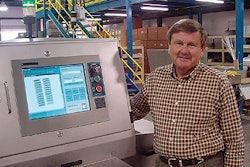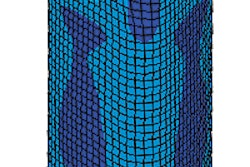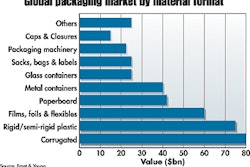Knigge is a consultant in packaging quality improvements who retired in 2001 after 36 years as staff engineer with General Mills. He spent the last 20 years on quality improvement in packaging, the last three focusing in on X-ray systems. Knigge is scheduled to speak November 4 at the Conference at Pack Expo at 9:00-9:45 in a session entitled
PW: What kinds of things can an X-ray system check?
Knigge: X-ray systems can check for deformed product, wrong total weight, overlapping product, quantity in the package, product counts, low fill and low weight, open seals and product in the seal area, netweight of product only rather than gross weight, missing items like premiums, additives, product anomalies such as chunks, ferrous materials even in foil packages, stainless steel, bone, plastic, glass, and stones. And those are just the highlights
PW: What is the cost justification for an X-ray system?
Knigge: X-ray systems are on par on a cost basis installed , not simply capital costs, with that of a metal detector and checkweigher tandem. And there’s also the floor space savings with a single X-ray system versus those two pieces of equipment.
While the capital costs of a metal detector and checkweigher may run in the neighborhood of $55ꯠ total, an X-ray system costs approximately $75ꯠ.
But the metal detector and checkweigher require motor starters, wiring, etcetera, so by the time it’s said and done, the total costs are on par with an X-ray system.
But it’s in a Life Cycle Cost Analysis that X-rays really shine. While I don’t have historical data available for a 10-year period, all indications are that it will operate with a lot less ongoing costs[than a metal detector and checkwigher duo].
Factors include repair costs and unexpected downtime, which also causes you not to be running or packaging at the time. That’s a significant cost.
Another factor is allowing bad packages to get to the consumer.
PW: What are some new applications for X-ray technology?
Knigge: X-ray systems as related to airport and other security applications are reaping a lot of developmental benefits. For example, the X-ray tube used for airport scanners is the same tube found in some commercial systems used for food packaging inspection.
The future is that X-ray systems will be able to confirm quality, not just quantity. They can analyze the salt content of the packaged product, which is a key ingredient in many foods. Eventually, users will be able to analyze product formula through X-ray diffraction by examining the chemical compounds of a package’s contents.
Airport machines now can tell the difference between organic and inorganic matter.
What makes X-rays so attractive in the food business is the improvements in the software that analyzes the images: 100% inspection at a relatively high speed without any human interaction. For airports, security companies are looking at that as a backup and supplement to human visual inspection. That’s one example where X-ray applications in food packaging are helping the professional security business.
PW: Any advice as to where on a packaging line the X-ray machinery is most beneficial? Simply before casing?
Knigge: It could replace an existing metal detector and checkweigher combo in a production line. Others may have processing issues they want to address, so it may be appropriate to use X-ray inspection upstream before the rejected product is enclosed within costly packaging materials.
PW: What about settings..any advice?
Knigge: When you first install an X-ray system on a packaging line, you discover there’s more problems than you’d ever imagined. So you must turn it down and adjust it back. Then comes the subjective task of determining what’s acceptable and what’s unacceptable.
The process is a lot more “painful” than you realize when you find that there’s things, such as chunks, in the product that you’d rather not have in there, but you can’t afford to reject 10% of your output.
On the other hand, you now have an issue to address and can then go back to the process area and take corrective action.
PW: Any final thoughts?
Knigge: As I’ve said, in all my 36 years in industry with General Mills, I have not seen anything so significant as X-ray inspection. It offers 100% inspection at relatively high speeds and can inspect previously undetectable quality concerns and can be used to determine salt or moisture content. I believe X-ray technology will become the standard end-of-the-line inspection system.

























